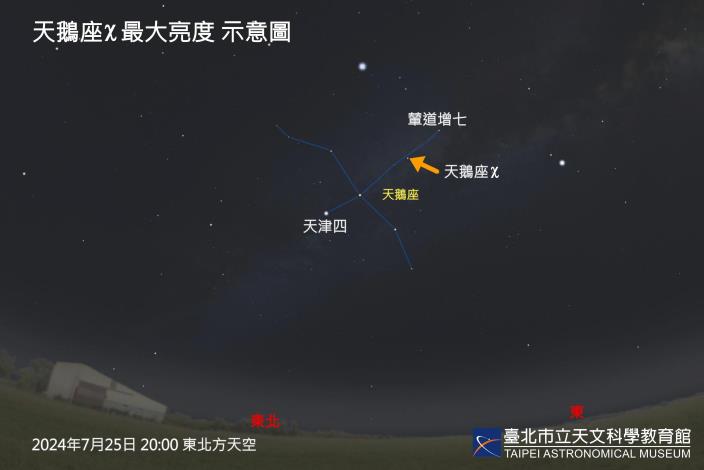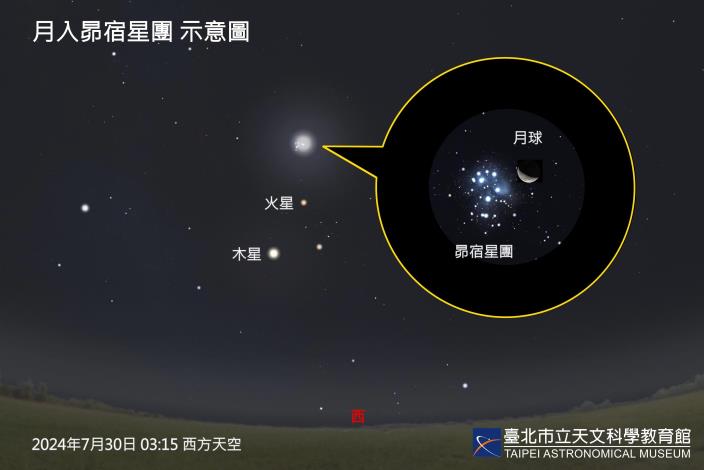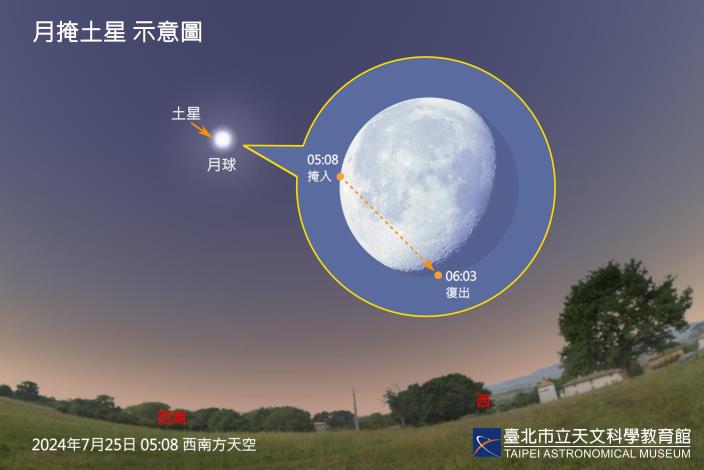Stargazer's Delight: Must-See Astronomical Events in July
Stargazers, take note! July is filled with spectacular celestial events, from Earth's aphelion and Mercury's greatest eastern elongation to the rare "Lunar occultation of Saturn" after 17 years and the brightening of the χ Cygni variable star, which will become 20,000 times brighter than its usual faintness, comparable to Pluto. Towards the end of the month, we will witness the Southern δ Aquariids meteor shower with ZHR~25 and the Lunar occultation of Pleiades. Don't miss the highly anticipated outburst of the T Coronae Borealis (T CrB) variable star between July and September, which could match the brightness of Polaris, offering everyone a chance to be the first lucky observer! It’s hard to believe, but during the scorching summer, the Sun is actually farther and smaller than usual. On July 5th (Friday) at 13:06, Earth will reach its aphelion, approximately 152.1 million kilometers from the Sun, about 5 million kilometers farther than at perihelion on January 3rd. The Sun's apparent diameter will be 3.3% smaller. However, due to the tilt of Earth's axis, the northern hemisphere remains in a hot summer season despite being at aphelion. Starting in late July, the χ Cygni variable star, which has a period of over 400 days, will reach its maximum brightness of about 3.3 magnitudes, making it visible to the naked eye and about 20,000 times brighter than its dimmest state at 14.2 magnitudes. Cygnus is an easily recognizable summer constellation, and χ Cygni, the brightest star in the swan's neck, is also easy to find with a star chart. On July 22nd (Monday) at 14:39, Mercury will reach its greatest eastern elongation, making it the best time to observe the planet. At this time, Mercury will have a brightness of about 0.4 magnitudes and the angular separation between Mercury and the Sun is 26.9°. The white bright spot visible to the naked eye in the western sky after sunset until around 19:30 will be Mercury. The rare "Lunar occultation of Saturn" will occur on the morning of July 25th (Thursday), a phenomenon not seen in Taiwan since 2007. At 5:08, Saturn will disappear behind the bright limb of the Moon and reappear from the dark limb at 6:03 after sunrise. Although the event is affected by twilight, it can still be observed with a small telescope. Those without a telescope can enjoy the sight of Saturn close to the Moon with the naked eye from 4:30, before twilight interferes, offering an unforgettable experience as the two gradually merge. On July 30th (Tuesday) in the early morning, the Moon will rise with the famous Pleiades (M45) in Taurus, gradually approaching and passing through the cluster, occulting several bright stars including the 2.8-magnitude Pleione. This spectacular event can be enjoyed with the naked eye or binoculars. July 31st (Wednesday) marks the peak of the Southern δ Aquariids meteor shower, with an estimated zenithal hourly rate (ZHR) of about 25. This shower is often seen as a warm-up for the Perseid meteor shower in August. The waning crescent Moon will not interfere with the view, making the entire night, from around 20:30 when the radiant rises until dawn, ideal for observing meteors. T Coronae Borealis (T CrB) is a very special recurrent nova, usually a dim 10th-magnitude star but can brighten to 2nd magnitude during outbursts, outshining Polaris. Based on historical observations from its previous outbursts in 1866 and 1946, astronomers have noticed a dimming phenomenon before the outburst. This year, the signal has appeared again, suggesting it might erupt before September. Stargazers should frequently check this part of the sky to see if the mysterious T CrB has quietly appeared! For more information, please visit the Taipei Astronomical Museum's "Celestial Events Forecast" webpage.



![Taiwan.gov.tw [ open a new window]](/images/egov.png)
